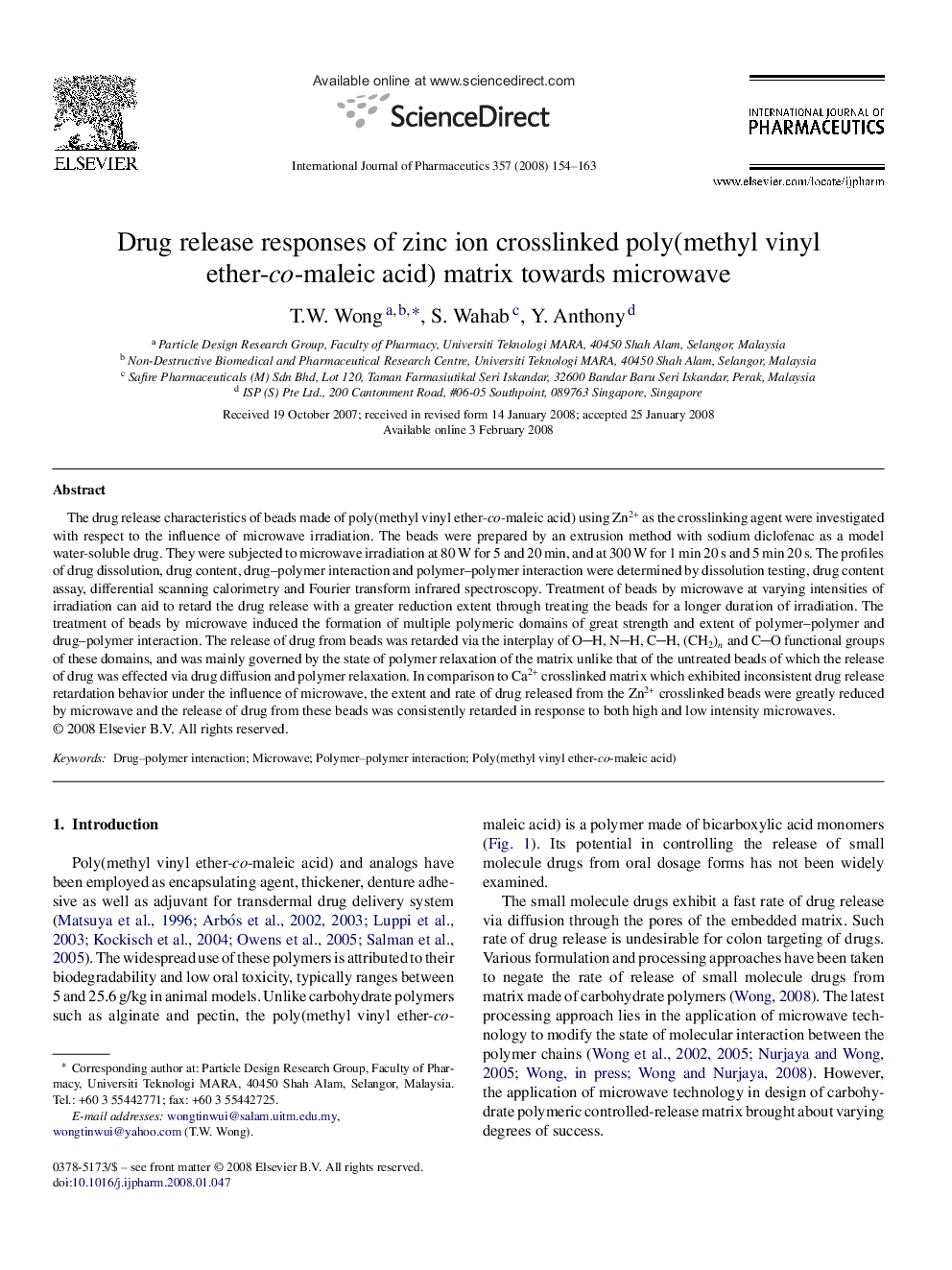| Article ID | Journal | Published Year | Pages | File Type |
|---|---|---|---|---|
| 2505305 | International Journal of Pharmaceutics | 2008 | 10 Pages |
The drug release characteristics of beads made of poly(methyl vinyl ether-co-maleic acid) using Zn2+ as the crosslinking agent were investigated with respect to the influence of microwave irradiation. The beads were prepared by an extrusion method with sodium diclofenac as a model water-soluble drug. They were subjected to microwave irradiation at 80 W for 5 and 20 min, and at 300 W for 1 min 20 s and 5 min 20 s. The profiles of drug dissolution, drug content, drug–polymer interaction and polymer–polymer interaction were determined by dissolution testing, drug content assay, differential scanning calorimetry and Fourier transform infrared spectroscopy. Treatment of beads by microwave at varying intensities of irradiation can aid to retard the drug release with a greater reduction extent through treating the beads for a longer duration of irradiation. The treatment of beads by microwave induced the formation of multiple polymeric domains of great strength and extent of polymer–polymer and drug–polymer interaction. The release of drug from beads was retarded via the interplay of OH, NH, CH, (CH2)n and CO functional groups of these domains, and was mainly governed by the state of polymer relaxation of the matrix unlike that of the untreated beads of which the release of drug was effected via drug diffusion and polymer relaxation. In comparison to Ca2+ crosslinked matrix which exhibited inconsistent drug release retardation behavior under the influence of microwave, the extent and rate of drug released from the Zn2+ crosslinked beads were greatly reduced by microwave and the release of drug from these beads was consistently retarded in response to both high and low intensity microwaves.
